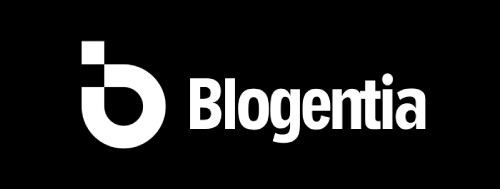Google Tests Floating Windows for Android Tablets – A Productivity Leap

Google Tests Floating Windows for Android Tablets – A Productivity Leap
In the rapidly shifting world of mobile devices, Google is making a bold move to dramatically enhance multitasking on Android tablets. Recent leaks suggest the tech giant is developing a gesture-driven feature that enables apps to launch from the taskbar into floating “bubble” windows — a change that could bring Android tablets significantly closer to the desktop-style flexibility users expect. :contentReference[oaicite:1]{index=1}
What’s Happening?
According to reports from sources including Android Authority and Digital Trends, Google is testing a new multitasking mode for Android tablets in the Android 25.10 Canary build. :contentReference[oaicite:4]{index=4} The feature allows you to drag an app icon from the taskbar and drop it into the bottom corner of the screen to launch it in a small, movable window — essentially a floating bubble rather than full-screen or split-screen. :contentReference[oaicite:5]{index=5}
This “bubble anything” concept is a big step beyond the current Android capabilities, which generally limit floating windows to chat or messaging apps. With this feature, any app — from browsers to productivity tools — might be opened in a free-floating window. :contentReference[oaicite:6]{index=6}
Why This Matters: Multi-tasking Meets Tablets
Tablets are increasingly used as portable workstations — for students, creators, professionals working remotely. Yet, one persistent limitation has been multitasking: switching between full-screen apps or using rigid split-screens often feels clunky compared to a desktop. Google’s floating window feature aims to erase that barrier and deliver a “desktop-like” experience on a tablet. :contentReference[oaicite:7]{index=7}
By enabling multiple apps to float, resize, move and overlap, Android tablets could finally offer productivity workflows that rival laptops or desktops. This could be a key differentiator as manufacturers and users look for devices that bridge the gap between phone and PC. :contentReference[oaicite:8]{index=8}
How It Works: The New Gesture Flow
1. Taskbar Interaction: The feature starts with the taskbar—a staple of Android tablets since recent UI upgrades. You’ll tap or long-press an app icon in the taskbar. :contentReference[oaicite:9]{index=9}
2. Drag to Corner: You then drag the icon toward the bottom left or right corner of the screen. The system reacts by previewing the bubble launch animation. :contentReference[oaicite:10]{index=10}
3. Release and Float: Upon release, the app opens in a movable, resizable window—or “bubble”—that can float over other content, thereby allowing you to keep working while the bubble hovers. :contentReference[oaicite:11]{index=11}
This workflow looks designed to reduce friction: instead of switching apps full-screen, you can keep multiple tasks visible, toggle them, reposition them—and get things done faster.
Developer & Ecosystem Implications
For app developers, this shift means designing UI that works fluidly in floating windows, supports resizing and repositioning, and adapts to varying screen sizes and orientations. It may accelerate the trend toward “adaptive layouts” that scale across phones, tablets and foldables.
For hardware makers like Samsung, OnePlus and others, standardising this feature at the OS level gives tablets more compelling value: a unified multitasking experience, not tied solely to manufacturer skins. That’s a big boost in a market hungry for hybrid productivity devices.
Competitive Landscape: Android vs iPadOS
One of Google’s clear targets here is iPadOS: Apple has long led tablet multitasking features such as Slide Over, Split View and Stage Manager. This floating window initiative brings Android closer to offering comparable flexibility.
By narrowing the multitasking gap, Google may make Android tablets more appealing as true laptop alternatives rather than just media-consumption devices. Especially in hybrid-work, education and creative roles, the difference matters.
When Will It Arrive?
While Google hasn’t announced an official release date yet, insiders at Android Authority suggest this feature may appear in the quarterly platform release known as QPR3 for Android 16, possibly around March next year. :contentReference[oaicite:16]{index=16}
As always with preview builds and feature flags, timelines can shift. But the presence of tutorial strings and UI assets in the current Android 25.10 Canary build is a strong indication the feature is real and coming. :contentReference[oaicite:17]{index=17}
What Could Go Wrong? What to Watch
Battery & Performance: Floating windows and constant multitasking can be taxing on system resources—especially on tablets with mid-tier hardware. Ensuring smooth operation without draining battery will be critical.
App Compatibility: Not all apps are built for floating/resizable windows. Some UI elements may break or behave unexpectedly. Developers will need to update apps accordingly.
User Experience Complexity: While the drag-to-bubble gesture is intuitive, poorly integrated gestures could confuse users. Seamless integration with existing multitasking workflows will determine success.
Final Thoughts
If this feature launches as expected, we could be looking at a meaningful shift in how tablets are used. Android tablets may finally move beyond being “big phones” and become real productivity machines — with floating windows, multitasking depth, and desktop-like workflows built in. The rivalry with iPadOS just got more interesting.
For users, it means greater freedom: you’ll be able to chat while reviewing documents, keep a video open while doing research, or simply drag an app out of the way without closing your main workflow. For developers and manufacturers, the challenge will be refining UI, preserving performance and delivering a smooth, coherent experience.
In short: Keep an eye on Android 16 and the next wave of tablet updates — at the intersection of mobile and desktop, tablets are evolving fast, and you’ll want to be ready to harness their new capabilities.
